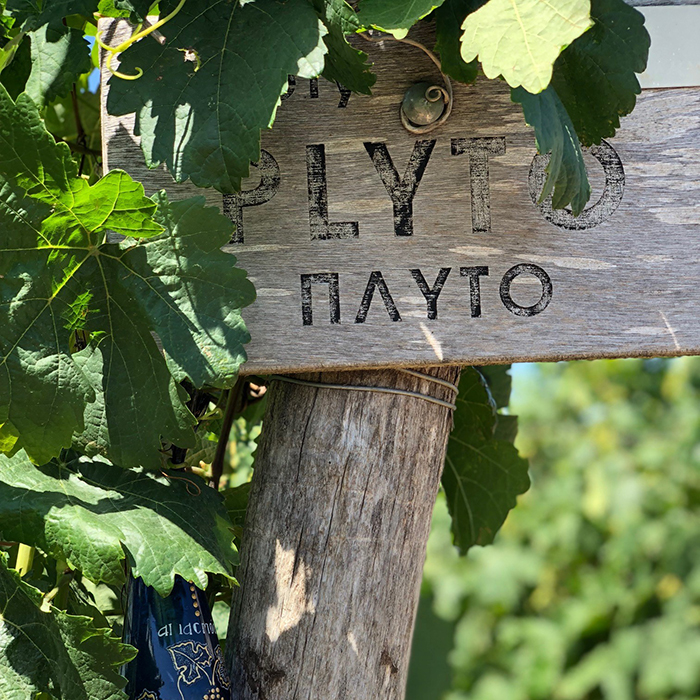Island life: tracking indigenous varieties in Crete
Author: Berry Bros. & Rudd

Crete – with its secluded beaches, archaeological wonders and delicious food – is in many ways the perfect holiday destination, but it’s also a viticultural treasure trove of indigenous grapes. As we drove to the easternmost part of the island, Nikos (the viticulturalist for Lyrarakis) talked passionately about the history and current developments of the wine industry here. Much of the viticultural landscape that we see today was shaped by decisions made centuries ago. Though some incredibly old vines remain, many of the plantings are more recent; and, of the 60 or so producers based on the island, Domaine Lyrarakis has been at the forefront of encouraging the replanting, resurrection and viticultural rebirth of almost extinct and heirloom varieties.
We were going to meet Yiannis, one of the passionate and animated growers with whom Bart Lyrarakis and his team work. He farms vines on the Ziros plateau and has been instrumental in helping to identify and cultivate lost varieties. Plots of Assyrtiko, Vidiano, Vilana, Thrapsathiri and Liatiko sit alongside a few more familiar faces like Chardonnay and Syrah; but there are also a few mystery varieties, yet to be identified.
Nikos has an encyclopaedic knowledge of the ampelography of Crete’s indigenous varieties – so much so that we have more pictures of grape clusters, leaves, trunks and tendrils than the Handbook of Enology. In amongst the vines, it’s hard not to sense the historical importance of field blends, particularly the co-planting of the white Plytó with the red variety Liatiko.
While Lyrarakis uses the grape to make a pale salmon-pink vinous rosé, it uses their oldest Liatiko parcels for a red. Concentrated and elegant, with layers of violet, wild herbs and cherry fruit; it nods towards noble Italian varieties structurally, while retaining a unique character all of its own. The presence of Plytó in the blend (approximately 10 percent) enhances the aromatics, retains freshness and increases complexity. It proves how beautifully these two grapes can meld together, something we hope to see more widely in the future.
That said, it will take time before this is possible, as there are only four hectares of Plytó in existence. It produces gloriously mineral wines from compact bunches that benefit from the windy conditions which characterise Crete’s vineyards. Because Plytó yields exceptionally clear juice (fining almost happens inside the berry, thanks to its high tannin content), these wines are completely vegan.

In the Psarades vineyard, near the Lyrarikis winery and cellar door, Plytó happily grows alongside another Cretan native, Dafni. This bay and rosemary-scented grape makes one of the most unique and aromatically complex wines. As such, Lyrarakis leave this grape unclad by oak, so the distinctive aromas can shine. While aromas of such specific herbs may sound extreme, this is an incredibly versatile wine that will match effortlessly with notoriously difficult foods, like artichoke, tomato and asparagus (move aside Sauvignon Blanc!).
Meanwhile Vidiano (also native to Crete), is quietly challenging Assyrtiko’s crown as the signature white grape of Greece. This may sound like a bold claim; but Vidiano has the texture, structure and natural acidity to stand out from the crowd, being able to shine on its own or gain further complexity from barrel fermentation and élevage in oak.
There are still many more grapes to discover, though; Lyrarakis is also trying to revive varieties like Mandilari, Kotsifali (the Cretan answer to Cinsault), Vilana, Thrapsathiri and Melissaki (the first and only vineyard was planted in 2010 by Lyrarakis, from vines found scattered in the foothills of Mount Psiloritis). These varieties don’t merely offer diversity, but can help growers facing rising temperatures and increasingly scarce water supplies. There is a reason why these varieties survived and evolved in the region’s harsh, hot, dry and windy conditions.
After two whirlwind days in Lyrarakis’s varied vineyards, we were overwhelmed by not only Bart Lyrarakis’s noble quest to protect these extraordinary grapes, but also the quality and variety they offer. We can’t wait to taste more.
If you’re ever in Crete, the Lyrarakis winery and cellar door is just a 30-minute drive from the island’s capital Heraklion, where Bart and his family would be delighted to welcome you. We can’t recommend it enough.
Browse the Lyrarakis range on bbr.com, or find a selection in both of our shops.


